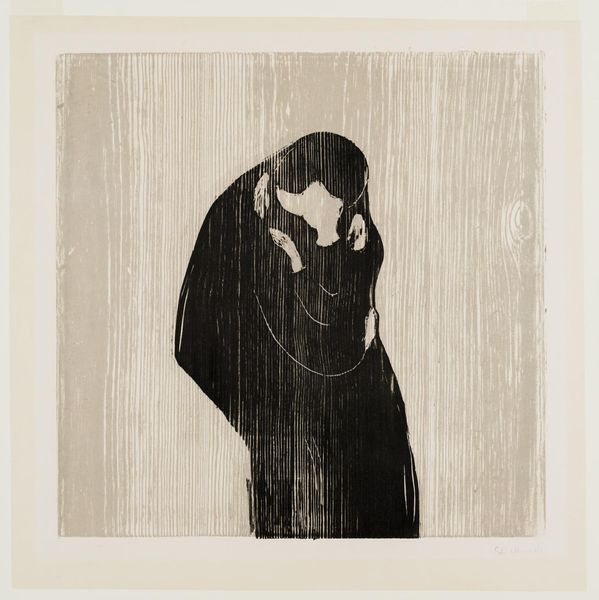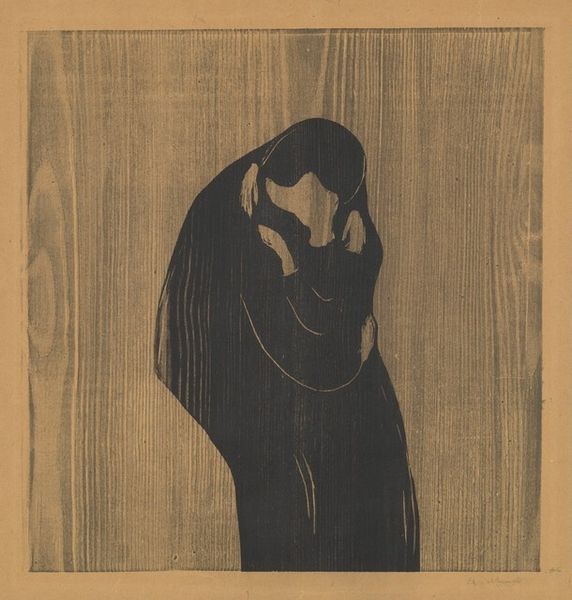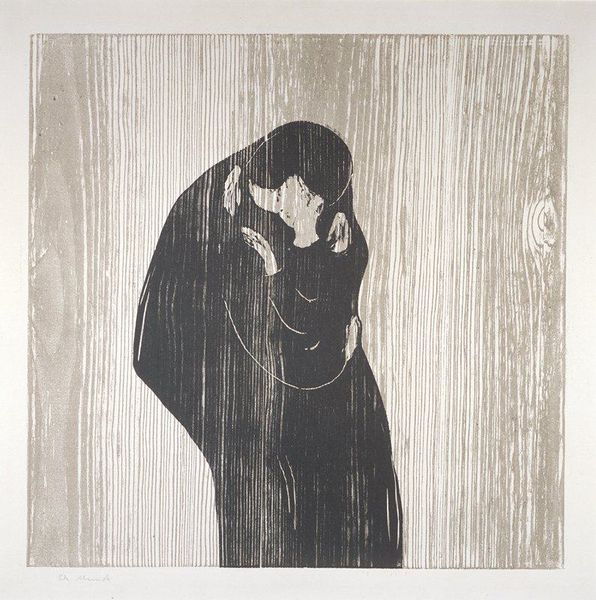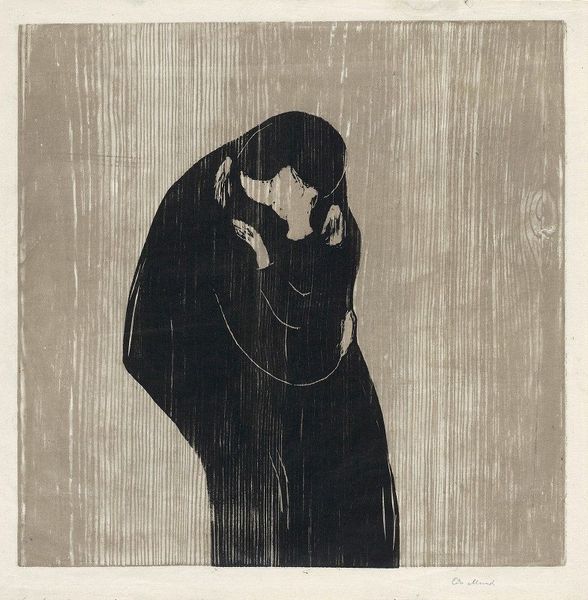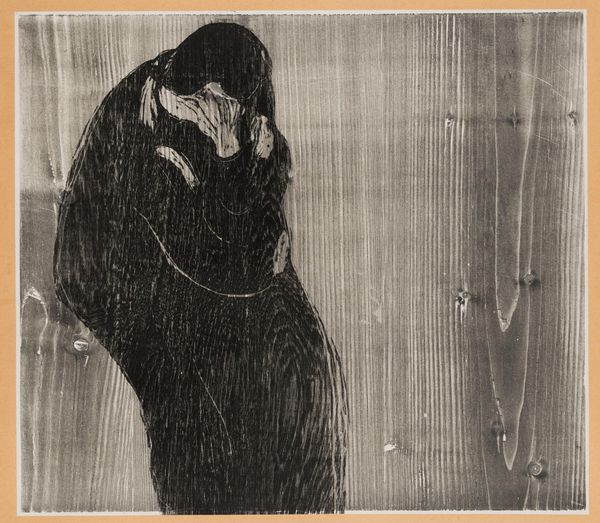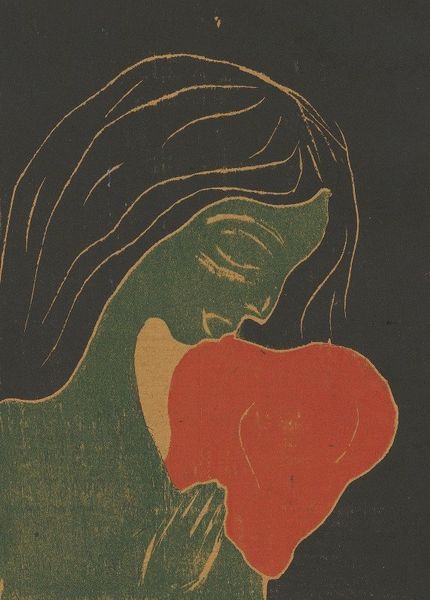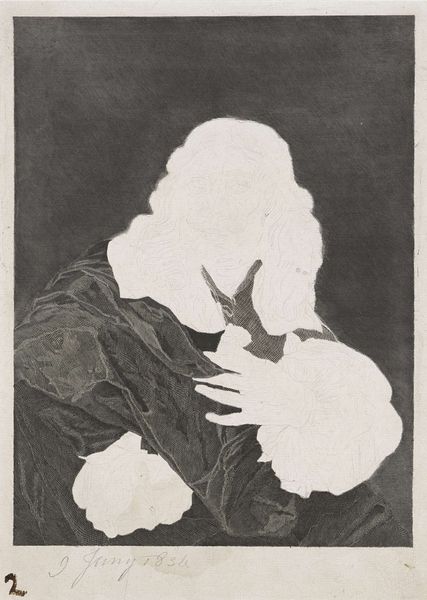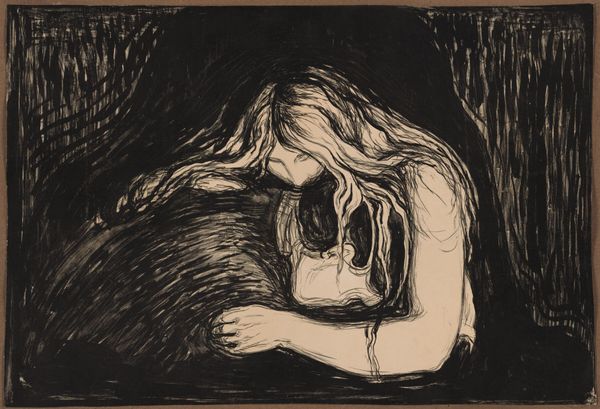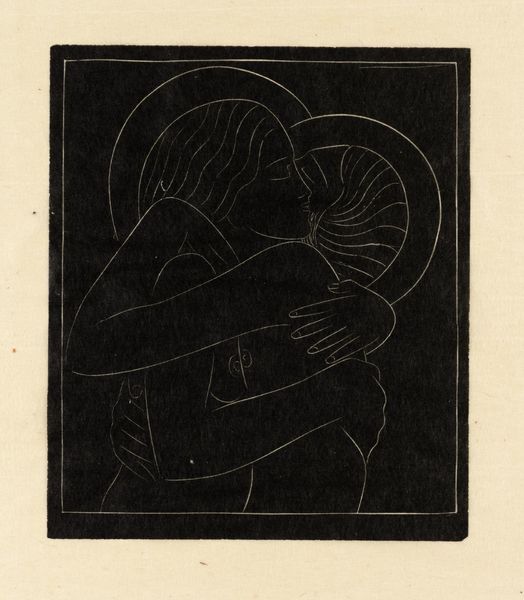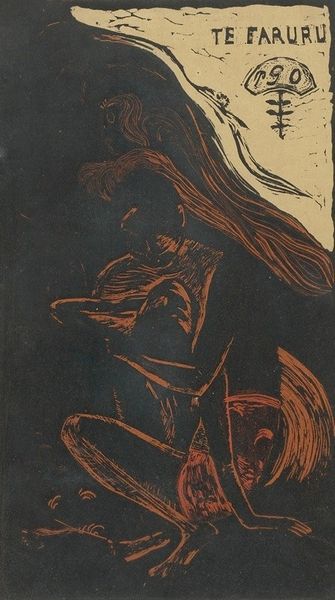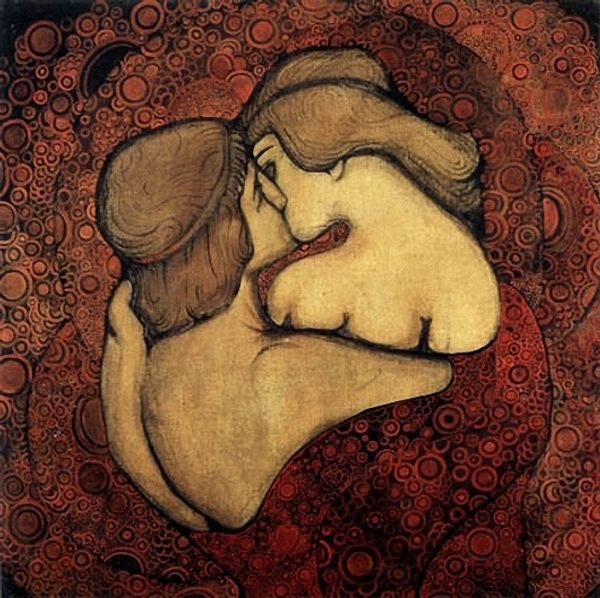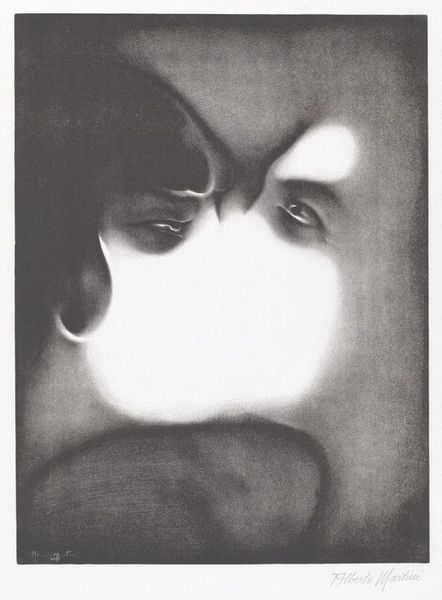
print, woodcut
#
portrait
# print
#
figuration
#
woodcut
#
line
#
symbolism
Dimensions: 47 x 47 cm
Copyright: Public domain
Editor: Here we have Edvard Munch’s "Kiss IV," a woodcut print from 1902. The first thing that strikes me is how the figures seem almost melded together, consumed by something… but what, I wonder? What do you see in this piece? Curator: I see a profound commentary on the societal constraints placed on intimacy and connection, particularly at the turn of the century. Munch, an astute observer of the human condition, depicts not just the act of kissing, but the psychological complexities inherent within relationships. What is the role of society’s gaze in determining what is and isn’t permitted? Editor: That's interesting. I was so focused on the merging of the two figures. I hadn’t considered the external forces acting on them. Curator: Notice how the lines of the woodgrain almost trap the figures. Consider the material itself, wood. It is, on one hand, organic, symbolizing life, but it's also rigid, solid – mirroring the stifling norms around sexuality and gender roles at the time. What tensions do you think these contrasting ideas might highlight? Editor: I suppose it shows how nature, the organic merging of two beings, is at odds with the rigidity of societal expectations. Like they are being boxed in... by norms. Curator: Precisely! Munch's symbolism encourages us to question how structures, both physical and societal, can simultaneously nurture and suffocate our deepest human desires. To what degree does art offer agency when oppressive forces dominate reality? Editor: It offers a space to question the oppressive forces by representing alternative or imagined realities. Thank you. I see it so differently now. Curator: My pleasure. Hopefully these sorts of exchanges empower and motivate change, however incremental, that chip away at the rigidness you mention, to reveal something a bit more loving.
Comments
No comments
Be the first to comment and join the conversation on the ultimate creative platform.
